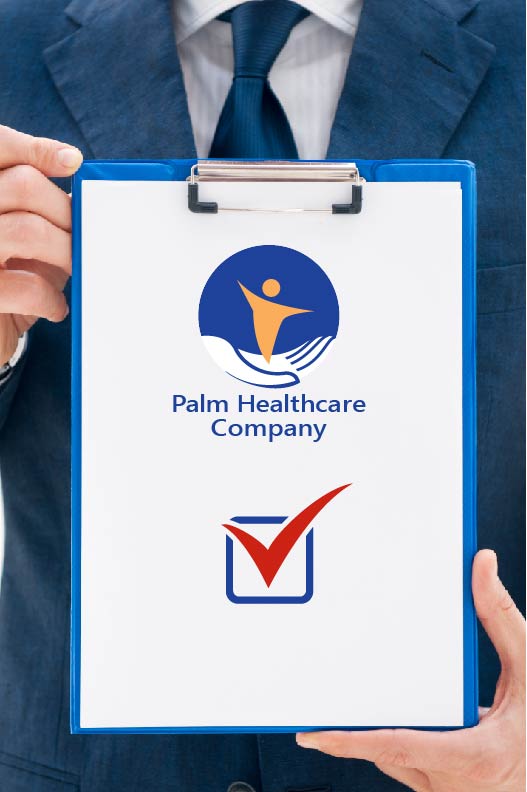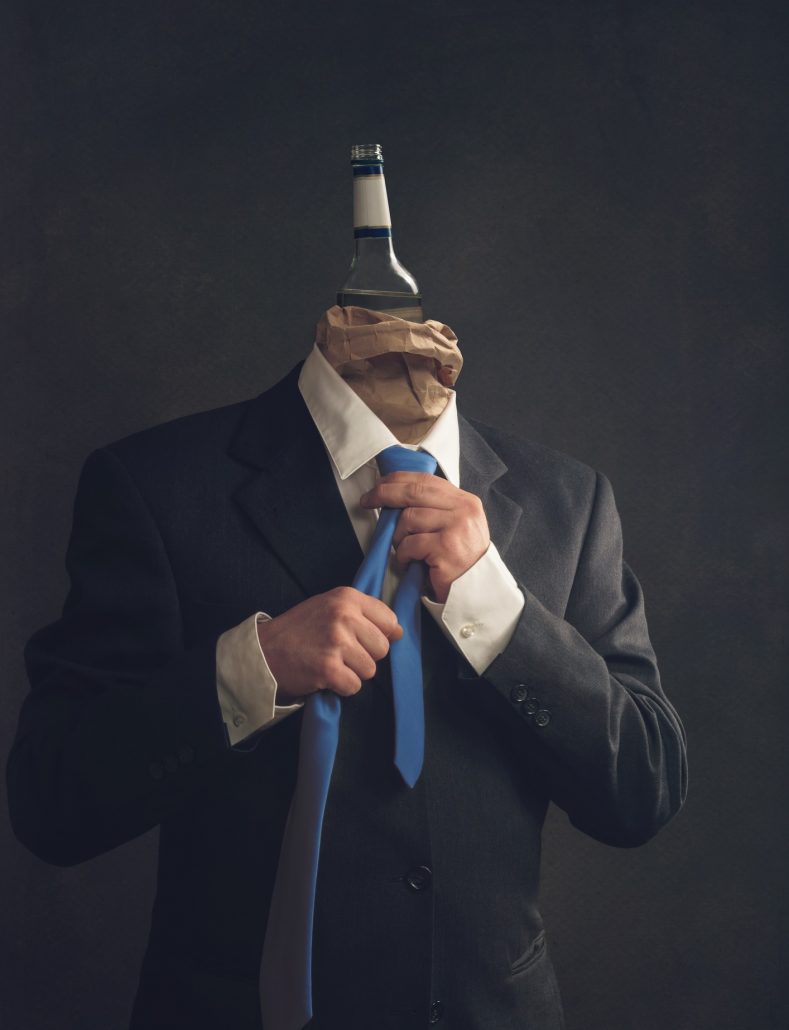by Justin Mckibben | Apr 26, 2018 | Addiction Treatment, Detox, Harm Reduction, Heroin, Inpatient Treatment, Needle Exchange Programs, News, Opioids, Outpatient Treatment, Professionals, Recovery, Safe Injection Sites, Sober Home

8 months ago, Florida was home to 953 licensed drug treatment centers, and 207 were in Palm Beach County. As of April 1, there are now 185 in Palm Beach, with 771 in the whole state. This decrease is due to the crackdown on fraud by Palm Beach State Attorney’s Office, which has led to 45 arrests in the last year and a half. So far, those arrests have led to 16 convictions. For State Attorney Dave Aronberg there is no sign of slowing down.
Recently, Dave Aronberg spoke with Opioid Watch to talk about the work his office has been doing to try and strengthen the addiction treatment industry. Chief Assistant State Attorney Alan Johnson also sat down to talk about how Palm Beach County is fighting to protect those who are coming to Florida for help. Johnson heads the office’s Sober Homes Task Force.
Dave Aronberg VS Purdue Pharma
According to Aronberg, he got involved with opioid-related issues back in 2001, when he was an assistant attorney general. Aronberg says he was asked by his boss, Bob Butterworth, to investigate Purdue Pharma. This Big Pharma giant is the producer of OxyContin. This powerful prescription opioid has been credited with making a heavy contribution to the opioid crisis. Dave Aronberg was to examine the marketing practices of Purdue Pharma, and is quoted in the interview transcript stating:
“I believe we were one of the first in the country.”
Of course, now Purdue Pharma is one of many big name pharmaceutical companies being accused in lawsuits across America. In fact, Delray Beach, Florida recently filed its own case against the company.
When asked about what he found, Aronberg said that Purdue was marketing the product like it was Advil. Purdue has been repeatedly accused of pushing this product as if it was far less dangerous than it actually was. In 2002, Dave Aronberg was elected to state senate, and shortly afterward the case against Purdue was settled. In the edited interview transcript, Aronberg is quoted:
“Purdue also offered $2 million to the state to establish its first prescription drug monitoring program. I worked in the state senate to get the PDMP enacted into law. But some conservatives refused to go along. They thought it was Big Government. So Purdue’s $2 million went away, because the offer expired. We didn’t get the PDMP till 2011. By then the carnage was horrific.”
Furthermore, Opioid Watch notes that a Purdue spokesperson confirmed that the state failed to implement a PDMP by July 1, 2004, which was the expiration of the companies offer.
Dave Aronberg Goes to Congress
In December of 2017, Aronberg went in front of Congress to testify concerning fraud and abuse in the addiction treatment industry. In this meeting, they discussed various issues with shady facility operators in Florida and made suggestions on how the law could step in to change it and protect patients. The interview transcript quotes Aronberg:
“In recent years, we’ve had an influx of unscrupulous operators who enrich themselves by exploiting those in recovery. As a consequence, we’re attracting thousands of young people from throughout the country into fraudulent rehab centers. (We’re talking about some, not all. There are good rehab centers, too.)”
Again, Aronberg found himself at battle with shady marketing practices. While investigating the treatment industry, Aronberg’s office discovered illegal operations that not only manipulated insurance providers but put patients at extreme risk.
From patient brokering, where illicit actors would sell patients with insurance to the highest bidders, to illegal kickback schemes being run by sober homes to outpatient treatment programs. Chief Assistant State Attorney Alan Johnson added information about the exploitation of urine analysis costs, and even some programs that began billing insurers for allergy and DNA testing. Aronberg states:
“We have a doctor who billed $7 million in nine months for allergy tests.”
Needless to say, the task force and state officials had their work cut out for them.
The ACA, ADA, and FHA
When talking about the many scams being run by various illegitimate businesses, the conversation came back to insurance and how these cons run. Here Dave Aronberg talks about his beliefs on how the law should step in and help restructure the current system.
“Number one: Change the Affordable Care Act’s fee reimbursement model to an outcome-based reimbursement model. Where the good providers are rewarded and the bad ones are paid less. Right now, the opposite occurs, so the more times you fail, the more money you get. There’s an incentive for more services and for more relapse. That shouldn’t be.”
After talking about the issues with the ACA, he talked about the ADA and FHA.
“The second change we need is this: the Americans with Disabilities Act and Federal Housing Act have been misused and exploited by bad actors who own flophouses.”
He went on to say,
“Local governments are largely prohibited from overseeing the sober home industry. If they want to require mandatory inspections, certifications, and registrations, they’re likely prohibited under federal law.”
In essence, Aronberg believes the law should allow local governments to create their own guidelines for health, safety and the general welfare of the patients. None of these demands seems outlandish, and with reasonable regulation, the reputable and effective providers in this industry can continue to best serve the South Florida recovery community.
Aronberg also points out that the problem is not only in Florida. Recently, he went to Orange County, California to meet with officials dealing with the same situation. Next for Dave Aronberg is leading the national task force of 34 prosecutors in 30 states. Their goal is to produce a working paper for setting best practices for prosecutors all over America concerning these issues. The task force also intends to make suggestions for changes to federal and state laws.
What might be most surprising though is the mention of harm reduction strategies?
“It’s about prevention, drug treatment, and innovative strategies. I think it will be powerful because it’s going to be prosecutors talking about needle exchanges and disposal and safe injection sites. People assume prosecutors are going to be focusing only on mandatory minimums and longer sentences. That’s not what this is about. I think it’s going to surprise people.”
While needle exchanges and safe injection sites have been proposed in numerous states, it is not the most popular idea. San Francisco is actually on track to open the first safe injection site in America, with Philadelphia not far behind, and Seattle and Baltimore in the conversation as well.
With Aronberg and the task force working to make a difference, hopefully, we will see the right change soon. We hope it will make the recovery community stronger as a whole. Reputable and respected providers are also doing their part to refine their practices while implementing innovative and effective resources to ensure that those who with drug or alcohol addiction always have a safe place in Palm Beach County to get the help they need. With the opioid crisis ongoing, having real resources for opioid treatment is still an essential part of overcoming the problem.
Palm Healthcare Company is a leader in holistic addiction treatment with over 20 years of helping people from all over the country heal mind, body and spirit. Providing safe and comprehensive care should always be a focus in the effort to overcome the drug problem, and preservation of life should always be a priority. If you or someone you love is struggling, please call toll-free now.
CALL NOW 1-888-922-5398
by Justin Mckibben | Jan 9, 2018 | Addiction Stigma, Drug Abuse, Opioids, Prescription Drugs, Professionals, Stigma

(This content is being used for illustrative purposes only; any person depicted in the content is a model)
The opioid crisis has affected every community in America. Opioids affect rural working class people, those in the inner city and suburbs, or even the wealthy and well-to-do professionals. While drug abuse in business has been highlighted in blockbuster films like the Wolf of Wall Street, the current reality is not far from it. According to addiction experts, substance use disorder is making a sobering impact on the financial industry.
This comes from not just an upscale partying lifestyle, but also from drugs used to manage performance and stress, along with physical pain. According to addiction experts, the financial industry itself is actively turning a blind eye to the issues concerning opioid abuse on Wall Street because money is still the priority, and stigma still gets in the way.
Opioids on Wall Street: White-Collar Confessions
As it stands there is no comprehensive research that takes a detailed look at opioid abuse in Wall Street among finance professionals. So we can’t exactly show the numbers to prove it’s prevalence. However, what we see consistently is a dramatic increase in addiction and overdose rates all over the nation in recent years.
Luckily, professionals from this demographic are beginning to speak out in hopes of progressive change.
One such individual is Trey Laird, a former Wall Street trader, who recently spoke to CNBC about his six-year opioid addiction. During the conversation Laird reiterates the critical understanding that substance use disorder can reach anyone, saying:
“Addiction pervades every single socioeconomic demographic that there is. Every industry, every race, men, women. It doesn’t care who you are,”
After getting clean himself, Laird went on to open a sober living community and says he hopes to specifically serve the Wall Street and white collar demographic.
According to Laird, there has been more talk about opioid addiction among people in higher socioeconomic brackets, but there is still much work that needs to be done. He acknowledges that increasing awareness is doing a great deal, but that the problem is also at an increase. Wall Street may finally be talking about it, but how many professionals will get the help they truly need?
Opioids on Wall Street: Stocks and Stigma
One of the biggest obstacles facing white-collar workers like those in Wall Street is the engrained stigma still attached to addiction. Even with all the shifts in our culture toward a better understanding of substance use and the compassion for those struggling, professionals still have this seemingly unbearable hurdle in front of them.
Truthfully, stigma is something that prevents most people from getting help. Professionals will often be too afraid of losing their jobs to admit they need help. Many in the world of Wall Street and finance may have no information on how to seek out treatment while adhering to their professional boards’ guidelines and business practices.
With white-collar workers, this may be an especially difficult thing because the idea of addiction is so often attached to stereotypes of the unemployable, the homeless, the unreliable and unstable that their high-earning careers might minimize the impact drugs have on their lives. Wall Street stockbrokers and traders might not see themselves as having a problem as long as they can function, which brings in the idea of the “functioning addict.”
Opioids on Wall Street: Function Addiction is Still Addiction
Many white-collar workers who struggle with drugs or alcohol may consider themselves a “functioning addict”, meaning they are less likely see their actions as a problem because they are able to maintain their professional or even personal lives. To make matters worse, frequently the people around someone who is professionally successful will not believe the addiction is real. They may admit that you’ve been careless or destructive in some respects, but will ultimately minimize it due to your financial stability.
As long as you’re making money and paying the bills how could you possibly be “that bad?”
Well, because “functioning addiction” is still an addiction.
Addiction isn’t about whether or not you are able to hold down a steady income. It does not depend on whether or not other people recognize that you have a problem or your competence with your profession. While addiction can and will have an impact on these things, it isn’t always as black and white as most people like to pretend.
Notice how earlier we said you may “maintain” other areas of your life? Well, we mean to say that you can get by for a while, but eventually, the effects of addiction will catch up with you. It could be in the form of serious health consequences or other devastating circumstances. It could take days, months or even years, but it will leave a mark.
Sadly, “functioning addicts” are also far less likely to get the help they desperately need.
Opioids on Wall Street: It Could Be You
While you might be able to keep your addiction secret, in the beginning, things will eventually get worse. Eventually, your addiction will become unmanageable.
If you think you might fit the “functioning addiction” criteria, look at the following questions and answer them honestly.
- Do you often think about using drugs or drinking?
- Do you find it hard to stop after you start drinking or using?
- Are you scheduling your time around drinking or using drugs?
- Have you tried to stop before, but found that you were unable to?
- Do you drink or use drugs first thing in the morning?
- Are you drinking or using drugs at work?
- Do you hide your drug use or drinking?
- Have you done something risky, like driven drunk?
- Do you worry about your drug use or drinking?
If you find you are answering “yes” more than “no” then you should seriously consider speaking with a medical or addiction professional about your drug use or drinking.
The opioid crisis is nothing to be ignored. Despite all that we think we have learned about addiction too many professionals don’t get the help they need. No one is exempt from the destruction of addiction. Opioids don’t care what street you work on, Wall Street or not, they can ruin your life all the same. If you or someone you love is struggling, please call toll-free now. We want to help.
CALL NOW 1-888-922-5398
by Justin Mckibben | Jan 3, 2018 | Addiction, Addiction Treatment, Donald Trump, Drug Abuse, Drug Policy, Dual Diagnosis, Family, Fentanyl, Inpatient Treatment, Law Enforcement, Mental Health, News, PAARI, Prescription Drugs, Professionals, Recovery, Sobriety, Stigma, Synthetic Drugs

With the beginning of the new year, Palm Healthcare Company is looking forward to helping spread more exciting stories of experience, strength, and hope while also sharing important news stories and exciting new developments that relate to the world of addiction recovery and substance use disorder treatment. As we commit ourselves to another year of fighting alongside thousands of people working toward a better future, we would also like to take some time looking back on all the big moments in 2017 that we shared with our Palm Healthcare Company Blog.
-
President Trump Declares Public Health Emergency: What’s the Plan?

October of 2017, President Donald Trump made an announcement declaring the opioid crisis in America as a Public Health Emergency. This highly anticipated declaration was delivered in a way slightly different than many had expected, noting the technical differences between a Public Health Emergency and a National Emergency.
Many advocates were concerned that this announcement did not provide a concrete foundation for the necessary federal funding and did not initiate much-needed action, but others we assured that this means the Trump administration was taking this issue very seriously. In this article, we took a look at what this announcement did actually accomplish, and what it failed to deliver on.
-
Racketeering for Fentanyl: Opioid Maker Insys Founder Arrested for Bribes

A huge development to another story came in late 2017 when John Kapoor, former CEO of Insys Therapeutics and founding father of one of the most prominent opioid manufacturers in the country, was arrested and charged with conspiring to push the signature drug of Insys Therapeutics, a Fentanyl spray called Subsys, for unacceptable uses through bribes and kickbacks.
The Palm Healthcare Company blog notes how back in 2016 the Justice Department reported to be charging 6 former executives and sales-managers of Insys Therapeutics for conspiring to defraud health insurers.
When looking at the details in this story, it has intensified the conversation about Big Pharma involvement in the epidemic
-
Can Kellyanne Conway Really Compete with the Opioid Crisis?

Not too long after President Trump’s declaration of a Public Health Emergency pertaining to the opioid crisis, Kellyanne Conway was announced as leading the charge on the White House’s efforts for addressing the opioid epidemic.
This Palm Healthcare Company blog saw a lot of comments!
While some find that having a high-profile figure at the head of the efforts gives validity to the White House’s commitment to solving the opioid issue in America, many others are speaking out in frustration. Those in opposition to this appointment say that while she may be useful as a counselor or pollster, she has no experience of expertise when it comes to drug abuse, addiction or substance use disorder treatment.
Thus far the one thing both Kellyanne and the President seem adamant about is a media campaign, but advocates are still afraid this is more “Just Say No” and not enough support for effective resources.
-
After Las Vegas Shooting: PTSD and Mental Health Must be Priority

In early October of 2016, the nation was shaken to its core when Las Vegas had one of the deadliest shootings in modern American history. This horrific tragedy flooded newsrooms and live viral footage with the country watching in shock as a gunman killed 58 people and injured 546 more at an outdoor music festival.
In the aftermath of this terrible and heartbreaking incident, our Palm Healthcare Company blog took a look at how such traumatic experiences impact people, and about the importance of those who struggle with Post-traumatic Stress Disorder (PTSD) getting proper diagnosis and care.
At a time when so many people are self-medicating with dangerous or even deadly narcotics, it is important to care for those most vulnerable, especially after such an earth-shattering experience.
-
Police Helping Addicts into Treatment is a Growing Trend Saving Lives

In August of 2017, we took a look back at several programs that had come to light all over the country based on Police Departments working with their communities to offer drug users the chance to get help with addiction treatment instead of being arrested and charged.
The pioneering program came from Gloucester Police Department in Massachusetts back in 2015. This program allowed users to ask police for help, and told addicts they could submit drugs to local law enforcement without fear of being arrested if they were willing to seek treatment. A 2016 study showed that this program was experiencing some impressive success.
Police departments in a number of other states were inspired by this and took up similar programs as a way to help their communities fight the addiction outbreak.
The Palm Healthcare Company blog took a close look at a handful of these programs to celebrate their compassion and success.
-
Sterilized for Cash: This Woman Pays Drug Addicts to Not Have Kids

Pregnant lady’s stomach and her hand holding dollar over black background
When we posted this Palm Healthcare Company blog we saw a great deal of debate in the comments on our Facebook. For over 20 years, Barbara Harris has driven across the country using cash to ask addicted women to give up their fertility. To date, the organization has paid over 7,000 people.
The controversy around such a powerful story had some people showing a great deal of support for someone giving addicted women an incentive to not get pregnant, while other people were appalled and angered that someone would entice desperate women who are not in the right mindset to make such dramatic and life-altering decisions with their bodies.
-
What Chester Bennington Taught Us about Addiction and Depression

(This content is being used for illustrative purposes only; any person depicted in the content is a model)
In July of 2017, the world lost a great artist and inspirational musician with the death of Chester Bennington, the lead singer of the band Linkin Park.
Initial reports were that Bennington had died from suicide by hanging, with later reports indicating that Chester had been drinking at the time of his death. The vocalist had been open about his struggles with depression and drug addiction over the years, and in this article, we took a look at just how much Chester Bennington could teach us about the devastation of depression and addiction.
-
Dear Media, Thank You for Bad Press

South Florida has been under a great deal of scrutiny recently, specifically concerning the issues facing the recovery community such as unethical and illegitimate sober home operators in the area. In June, there was a Megyn Kelly NBC News Investigation which focused in on Delray Beach, Florida and some of the big problems concerning unscrupulous activities from corrupt individuals exploiting drug addicts in need of help.
We took this time to look over some of the bigger stories concerning the illicit activities in South Florida with the recovery industry while showing support and gratitude for all those working together to try and put an end to operators who are taking advantage of people in need of help.
-
Palm Healthcare Measures Up to Addiction Treatment Outline for EAP

In September of 2017, we took a very close look at an article written by the Journal of Employee Assistance that was designed to help Employee Assistance Programs (EAPs) find the right kind of addiction treatment programs to recommend to their clients.
The outline given for EAPs to find effective and reliable addiction treatment options gives a list of things to look for. The Palm Healthcare Company blog was happy to show off just how all of our facilities measure up to these crucial standards.
Keep an Eye Out for More
Palm Healthcare Company continues to try and share every treatment development, news story or exciting innovation on our blog to not only help more people learn and raise awareness but to offer some perspective and maybe ask some new questions.
Whether it is sports, celebrities, news or politics we are committed to talking about important stories that pertain to drug policy in America, substance use disorder, mental health, and personal wellness. We will continue to touch on the top stories of 2018 to spread the word and hopefully inspire more people to get involved in these crucial conversations.
2017 was an intense, innovative and inspiring year. Here is to hope for 2018.
Holistic addiction treatment means incorporating every aspect of life for each individual with personalized opportunities for lasting recovery. So every bit of information can help anyone make a more comprehensive decision about what kind of recovery plan they want. If you or someone you love is struggling, please call toll-free now.
CALL NOW 1-888-922-5398
by Justin Mckibben | Sep 16, 2017 | Addiction, Addiction Medicine, Addiction Treatment, Detox, Dual Diagnosis, Family, Inpatient Treatment, Outpatient Treatment, Professionals, Recovery

In 2015 the Journal of Employee Assistance published an article to help Employee Assistance Programs (EAPs) looking for addiction treatment programs to recommend for their clients. Guess what, challenge accepted!
When we at Palm Healthcare Company took a close look at the outline provided by the Journal of Employee Assistance on methods of treatment, we were happy to note that our treatment programs fit the description perfectly.
It is important for employers and their assistance groups to have a clear and comprehensive idea of what an effective addiction treatment program looks like, so they can provide their employees with options for quality care. The Journal of Employee Assistance article goes on to identify some of the aspects of the addiction treatment outline for EAP professionals should consider as vital for effective recovery. In order to make confident recommendations, Palm Healthcare Company also believes EA professionals should do all they can to understand all levels of care and the methods of treatment.
We understand and appreciate the power of information. Let us provide a detailed look, point-by-point, at how Palm Healthcare Company can best serve your clients by meeting the suggested specifications of the Journal of Employee Assistance.
Personalized Treatment
As stated in the article by the Journal of Employee Assistance, the current focus for treatment of chronic diseases like addiction is based on dynamic treatment, also known as adaptive interventions or multi-stage treatment strategies. The idea is to continuously evaluate the individual’s progress in order to adjust their treatment.
One-size-fits-all tactics fail to address unique life issues that are connected to substance use and addiction. Personalized treatment that is tailored to each individual’s specific needs is a crucial element to effective holistic treatment.
In fact, the National Institutes of Health have stated that the best programs provide a combination of services that take into account all aspects of the individual, including:
Palm Healthcare Company does not believe in the ‘one-size-fits-all’ model of treatment. We know that every person has their own unique experiences and circumstances. We all live and learn differently, so addiction treatment should take those differences into consideration.
Traditional Methods
Palm Healthcare Company, like most traditional programs, provides the basics of addiction treatment. Looking at the addiction treatment outline for EAP professionals, the most traditional methods to look for include:
-
Detoxification
All detox facilities are staffed with medical professionals experienced with treating those struggling with drug or alcohol addiction. Every individual is given a thorough intake assessment to ensure the safest and most comfortable method of medical detox is offered to fit each client.
-
Behavioral therapies
Because addiction is about far more than substance use, behavioral therapy is extremely important to the recovery process. Not only do these sessions examine destructive behaviors, but they also assess the thoughts and feelings that might cause them.
-
Life skills
As part of offering behavioral therapy, Palm Healthcare Company facilities also offer unique classes on building social skills and personal development opportunities.
-
Psychoeducational
Palm Healthcare Company also believes that a crucial aspect of overcoming addiction is to understand it through educational, evidence-based therapeutic intervention. Classes are consistently provided explaining various aspects of addiction and mental health disorders so each individual can better understand and cope with their illness.
-
Support groups and 12 Steps
Historically, group therapies and a sense of community has always been a big piece of addiction recovery. Opportunities to get involved with 12 Step fellowships and other support groups can help individuals to find a sense of community with others recovering from drugs or alcohol. Palm Healthcare Company programs consistently facilitate these options.
-
Family weeks or weekends for those over 13 years old
The Palm Healthcare Family Program is a unique and empowering experience for individuals trying to overcome their addictions, as well as for their loved ones. Part of the family program is the Palm Healthcare Family Weekend which includes various events designed to educate family members and bring each other closer through connection and support.
Innovative Methods
However, the Journal of Employee Assistance notes that the more “novel yet effective” programs also include more innovative addiction treatment methods. These facilities go above and beyond the basic outline of services to provide holistic treatment programs. So how does Palm Healthcare Company match up to these recommendations?
-
A range of therapeutic approaches
Again, Palm Healthcare Company does not believe in the ‘one-size-fits-all’ approach to treating addiction. Because not every form of therapy will be as influential for everyone our facilities offer a variety of therapeutic courses. Some of these include:
Palm Healthcare Company believes in utilizing cutting-edge treatment methods to create a more in-depth and personal recovery experience.
-
Provide multiple levels of care
There are several reasons why having different levels of care can be a big deal for EA professionals seeking treatment providers. For one, different levels of care allow for different levels of contact with the outside world.
With partial hospitalization, intensive or residential levels of treatment there is a much more secure and controlled environment with daily schedules full of therapy options and courses. If the individual is approved for Outpatient or Intensive Outpatient treatment they can attend work for part of the day while attending classes periodically.
Palm Healthcare Company helps the patient choose the level of care that is best suited for their needs. Monitoring individual progress and adapting the aspects of treatment to fit their progress is an important way to personalize the experience and support the transition from addiction to independent recovery.
-
Treat co-occurring mental health disorders
When an individual is struggling with a mental health disorder and substance use disorder the best method for them is dual diagnosis treatment. This allows the individual to address the addiction and the co-occurring disorder individually and simultaneously for a complete recovery.
Palm Healthcare Company understands that if someone only addresses one disorder without the other then they are more likely to have difficulty maintaining their recovery. These conditions tend to feed off of one another, and one going untreated can cause a relapse in the other.
-
Address underlying issues related to addiction
Palm Healthcare Company also cares a great deal about understanding substance use disorder; where it comes from and how it influences the lives of those who suffer. Therefore, we believe in exploring each individuals experience to help them find out what underlying issues are connected to their drug or alcohol use.
Addiction is such a complex disorder. There is no one way that someone ends up addicted. While there is a genetic predisposition, there are numerous other factors that contribute to the development of substance use disorder. Because things like trauma and family dynamics play a big part in the development of addiction, an effective treatment program should also examine and address these issues if the patient is going to experience lasting recovery.
-
Involve the entire family, including children
The Palm Healthcare Family Program is committed not just to offering brief visits with loved ones. Our Family Program is designed to:
- Give the family essential educational information
- Establish deeper connections between loved ones through recovery
- Teach about emotional well-being and healthy boundaries
- Offer life-changing breakthrough experiences
- Create a strong support system
The Palm Healthcare Family Program is a FREE service offered by our facilities because we believe that family involvement is incredibly important for lasting and worthwhile transformation.
-
Explore performance at work
Clients who are professionals are often very focused on how their substance use affects their career. Along with life skills and behavioral therapy, there is an important element of understanding how addiction impacts your professional life. Everyone from CEOs and executives to labor workers in every industry needs to be aware of how addiction affects the workplace.
Of course, EA professionals are more likely to recommend a treatment program that pays attention to addictions impact on the workplace. So teaching clients how to safely and effectively transition from treatment back to work is an important element of these programs.
-
Examine legal and financial issues resulting from addiction
Our facilities also take pride in providing teams of skilled individual case-workers who consistently work on behalf of each individual to maintain their personal interests regarding legal issues or other concerns they may have. It is important that an addiction treatment provider has experienced staff members who understand the difficulties that can arise from substance use and know how to best support each individual with these concerns.
Working with the Workforce
All Palm Healthcare Company facilities provide the more holistic and effective approach through this criterion of additional services. We know that addiction is an illness that impacts every walk of life. It also impacts any career position in every industry. We work every day to provide safe, effective and personal recovery plans to every individual we come into contact with.
Another part of providing recovery options to professionals can be to allow EA professionals to get involved in the aftercare process. An EA professional can inquire about policies relating to communication with the source of the referral. If the appropriate consent is given, the EA professional themselves can even become an important part of the recovery team for helping create a discharge and aftercare plan.
Looking at these very important suggestions coming from the Journal of Employee Assistance we are confident in our dedication to providing revolutionary and holistic care above and beyond the addiction treatment outline for EAP professionals. Palm Healthcare Company wants to support you and your clients to create a happier and healthier future. Please call toll-free now for more information.
CALL NOW 1-888-922-5398
by Justin Mckibben | Aug 29, 2017 | Addiction, Alcohol Addiction, Drug Abuse, Drug Policy, Inpatient Treatment, Outpatient Treatment, Professionals

With substance use disorder and addiction being such a prevalent problem in America, we think it is crucial for people to understand substance use and addiction as best as they possibly can. Part of looking at which professions have the highest rate of substance use disorder is not just about making people aware of how common it is in the workplace, but also to break the stigma of substance use disorder and show that drugs and alcohol impact people in every workplace, from entry level to executives.
Resources of Substance Use Rates
In April of 2015 the Substance Abuse and Mental Health Services Administration (SAMHSA) released a survey that combined data collected by the National Survey on Drug Use and Health (NSDUH) from every year between 2008 and 2012 to find out which professions held the highest rates of:
The NSDUH assess symptoms of dependence or abuse of alcohol or drugs through a series of questions included in their survey. The questions are based on the criteria described by the fourth edition of the Diagnostic and Statistical Manual of Mental Disorders (DSM-IV). It defines illicit drugs as:
The NSDUH uses the definition of heavy alcohol use of:
- 5 or more drinks on the same occasion
- 5 or more days in the past 30 days
The rating system includes full-time workers from age 18 up to age 64.
Which Jobs Have the Highest Rates of Substance Use Disorder?
In the following categories, number represents the percentage of works out of all those surveyed between 2008 and 2012.
Heavy Alcohol Use
- Mining workers- 5%
- Construction- 5%
- Accommodations/Food Services- 8%
- Arts/Entertainment/Recreation- 5%
- Utilities- 3%
- Wholesale trade- 2%
- Management/Administrative support/waste management- 9%
- Manufacturing- 7%
- Agriculture/forestry/fishing/hunting- 4%
- Retail trade- 0%
- Transportation and warehousing- 8%
- Other services (except public administration)- 5%
- Real estate/rental/leasing- 5%
- Information- 1%
- Professional/scientific/technical services- 7%
- Finance and insurance- 4%
- Public administration- 6%
- Educational services- 7%
- Health care and social assistance- 4%
Illicit Drug Use
The overall rate of illicit substance use among full-time workers, between the age of 18 to 64 years old, who admitted to having used within a month of taking the survey was 8.6% of workers. That may not seem like a lot, but when you consider that is a percentage of ALL professions it is actually a lot bigger than you think.
- Accommodations and food services- 1%
- Arts/Entertainment/Recreation- 7%
- Management/Administrative support/waste management- 1%
- Information- 7%
- Construction- 6%
- Other services (except public administration)- 2%
- Real estate/Rental/Leasing- 9%
- Retail trade- 3%
- Professional, scientific and technical services- 0%
- Wholesale trade- 8%
- Manufacturing- 4%
- Finance and insurance- 5%
- Utilities- 1%
- Transportation and warehousing- 9%
- Agriculture/Forestry/Fishing/Hunting- 7%
- Health care and social assistance- 5%
- Mining- 0%
- Educational services- 8%
- Public administration- 3%
Substance Use Disorder
When it comes to substance use disorder the data is collected for full-time workers from age 18 to 64 that fit the criteria for substance use disorder within a year of taking the survey. The rates of substance use disorder in different professions include:
- Accommodations and food services- 9%
- Construction- 3%
- Arts/Entertainment/Recreation- 9%
- Mining workers- 8%
- Utilities- 5%
- Management/Administrative support/waste management- 4%
- Retail trade-5%
- Agriculture/Forestry/Fishing/Hunting- 5%
- Wholesale trade- 4%
- Other services (except public administration)- 1%
- Real estate/Rental/Leasing- 0%
- Information- 8%
- Finance and insurance- 4%
- Manufacturing- 3%
- Transportation and warehousing- 1%
- Professional, scientific and technical services- 8%
- Public administration- 2%
- Health care and social assistance- 7%
- Educational services- 5%
Different Job Substance Use Trends
When looking at these rankings we can see a few professions that are consistently represented in the top five of all three categories.
NOTE: Remember the top ranks are not based on the overall number of users, but on the percentage of the total industry.
#1 in Heavy Alcohol Use– Mining Workers
121,000 mining workers that were surveyed contributed to the top ranking percent in an industry for heavy alcohol use. This number may seem small compared to the high numbers of heavy alcohol use in other professions. But think of it like this- If there are:
- 100,000 nurses and 70 of them drink heavily
- 100 miners and 70 of them drink heavily
Which would you think it a bigger issue?
#1 in Illicit Drug Use– Accommodations and food services
Accommodations and food services came in as the top rated profession for illicit drug use. According to the numbers of all those in this industry measured, approximately 1,169,000 were recorded for illicit drug use within a month of the survey.
This statistic does not change when accounting for gender or age differences. What this suggests is there may be something unique about this industry and how people end up using drugs more often working in accommodations and food services more than anywhere else.
#1 in Substance Use Disorder- Accommodations and food services
In terms of substance use disorder the accommodations and food services industry again come in at the top of the list. This time, the numbers of those surveyed shows that approximately 1,038,000 people in this profession actually fit the criteria from the DSM-IV for substance use disorder.
But unlike with illicit drug use, this rating did not stay the same when adjusting for age or gender differences. So what does that mean?
It means the higher rates of substance use disorder in the accommodation and food industry depends on the demographics employed in that industry. For example, if you look at age:
- 18-25 years old this industry is number 2
- 26-34 years old its number 1
- 35-49 years old this industry is number 3
- 50-64 years old its only number 11
So What Jobs are the Worst for Substance Use Disorder?
The big thing here is we must acknowledge that there are variables like age and gender that actually will make a big difference as to which jobs are ‘worse for substance use disorder’, while also recognizing the issue of substance use and addiction is not one size fits all. It is a different story for every individual. There is a formula that takes environment into account, but that formula is not the same for everyone.
A young woman working in the accommodations and food services industry might have a harder time staying off drugs than she might as a school teacher… or maybe not. Young men working in social assistance might find it a lot easier to stay off of drugs than one working in construction. It isn’t a guarantee, but it is a trend we can note.
So, does your job put you in an industry with higher rates of drinking, drug use or addiction? Are you more likely to have co-workers or employees that struggle with substance use than in another position?
With data like this we have to ask- does the job make an impact?
When we consider how central our jobs are to our everyday lives, we should take into account what kind of workplace we put ourselves in and what we have to offer. It is the same thing for those of use trying to work toward recovery. Substance use disorder recovery can be a lot of work, but it is definitely worth the livelihood you stand to gain from it. If you or someone you love is struggling with substance abuse or addiction, please call toll-free now.
CALL NOW 1-888-922-5398
by staff | Aug 28, 2017 | Addiction Stigma, Addiction Treatment, Drug Abuse, Drug Policy, Inpatient Treatment, Outpatient Treatment, Professionals, Stigma

(This content is being used for illustrative purposes only; any person depicted in the content is a model)
It used to be that when people thought of someone struggling with addiction or alcoholism, they pictured a hobo with patchy clothes drunk under a bridge or blacked out in an alley somewhere. Now, after years of watching our stigmas be proven wrong over and over again, we thankfully have a more realistic image.
These days it is not all the uncommon to imagine that people struggling with substance use disorders do actually have jobs. In fact, most people who struggle with addiction are middle-age, middle-class Americans who have careers or trades. What is called the ‘functioning addict’ often flies under the radar, paying the bills and taking care of their responsibilities, although maybe not as well as they imagine.
So with such a high percentage of the working population struggling with substance use disorder, how should employers be addressing addiction in the workplace? Here are 7 suggestions for the employer who might have to deal with addiction in the workplace.
1. Have a policy and enforce it
The first way for employers to address addiction in the workplace should be a given; have a policy in place for drugs and alcohol.
By establishing the workplace policies and expectations related to drugs and alcohol, having them in writing and explaining them clearly to your staff. You have already set a boundary. As an employer it is up to you to let your staff know what your expectations are and what you will and won’t tolerate.
Then, once the policy is in place, follow through with it. You are able to address substance use as a whole by implementing policies on drugs and alcohol and then committing to those guidelines.
2. Avoid enabling
By establishing a drug and alcohol policy an employer is already setting up the groundwork to help them avoid enabling. Those policies will hold not just your employees accountable, but also they will hold you accountable.
Employers, managers and supervisors should avoid enabling addiction in the workplace with actions like:
- Lending money to an addicted employee
- Covering up for the employee
- Giving the employee’s work to others
- Trying to counsel the employee without a professional
Families and loved ones are always warned about the risks of enabling someone struggling with addiction, the same goes for their bosses. If you have an employee who is struggling do not make excuses for them. It doesn’t serve the company, and it definitely doesn’t serve their best interests either.
3. Schedule a meeting
When an employer is concerned about an employee who may be struggling with drugs or alcohol try not to address it over a phone call or an email. Take a more hands-on approach, it is just good leadership. Schedule a face-to-face meeting.
Supervisors should review signs of abuse with an Employee Assistance Program (EPA) counselor before meeting with the employee.
An employer or supervisor should notify the individual of a place and time to have a meeting for discussing the employee’s performance. The supervisor should plan to hold the meeting in a private setting, so not to spread someone’s personal business around the workplace.
4. Keep it professional
It is very important that when addressing the individual you do your best to be professional without making the conversation too personal. Instead, the employer or supervisor should keep the focus of the meeting on the employee’s job performance. Make it clear that if they do not correct their performance issues they may face discipline or termination.
Even if you have a good relationship, setting boundaries is important when dealing with a work-related issue concerning drugs or alcohol. It is best to not directly address the substance abuse in question, unless they have been obviously impaired on the clock.
Then suggest the employee to the EAP. While an employee cannot be forced to use EAP services, you can strongly encourage them to take those steps.
5. Expect Resistance
Denial is a common reaction for someone confronted with their substance abuse. Remember their resistance isn’t just about their addiction in the workplace; they may still be dealing with that denial within themselves. Accepting that drugs or alcohol are a serious problem is not an easy admission to make for most people.
If the employee is denying their addiction in the workplace and refusing to seek or accept help from EAP, be ready for it. Whoever supervises this employee should continue to document any and all issues with that individual. If necessary, be prepared to follow through with disciplinary action. Stay consistent. It may help them realize how their substance use is impacting their work before it is too late.
6. Intervention
If an employee has been intoxicated or under the influence of drugs at work an employer may consider holding an intervention with colleagues, coworkers or other people close to the individual. While this may not always be appropriate, it is still an option.
Most of us are familiar with the concept. With an intervention all people involved confront the addicted employee about their drug or alcohol use, but not to punish or scrutinize. Remember the purpose of an intervention is to encourage them to seek professional help.
If choosing to stage an intervention, remember there are trained professionals who should lead a work-based intervention. An employer or supervisor should not lead the intervention.
For more information on how to stage a work-based intervention contact an EAP counselor.
7. Offer support
Now just because we have suggested being a professional doesn’t mean we are suggesting not being compassionate. You may have a close relationship with a lot of your staff. As a supervisor you may have cultivated a teamwork culture that is result driven and supportive, so support your team members.
One of the best things an employer can do to help employees with substance abuse problems is to offer comprehensive health plans that cover all stages of treatment for substance use disorders. Some of the best healthcare plans for your employees will cover:
- Educating employees on the dangers of abusing alcohol and drugs
- Addiction treatment
- Counseling
- Aftercare
If you want the people on your team to get help when they need it, also be willing to show your support when they reach out for it.
Conclusion
Of course if the employee is displaying erratic or disruptive behavior, or intoxicated in the workplace, than an employer will want to contact EAP services to alert them of the situation. After this, depending on the context you may send an employee home or place them on leave or suspension. Whatever you do, document every incident and subsequent action. Some may require drug testing. Make sure to adhere to your own policies.
At the end of the day, the employer should be motivated by the chance to help an employee struggling with addiction in the workplace to get the help they need to get better. If you want your team to be as healthy and productive as possible than you should be willing to support them in any way you can. Be sure to stay accountable and committed to your staff. They make it all possible.
Addiction does not care about your job title. Plenty of professionals experience serious substance use disorder, everyone from an intern to a CEO. Palm Healthcare offers assistance to employers and their employees when it comes to initiating the treatment process. Our addiction specialists and case managers are just one part of a compassionated staff thoroughly trained to navigate the process so that professionals seeking help can do so effectively. If you or someone you know is struggling, please call toll-free now.
CALL NOW 1-888-922-5398















